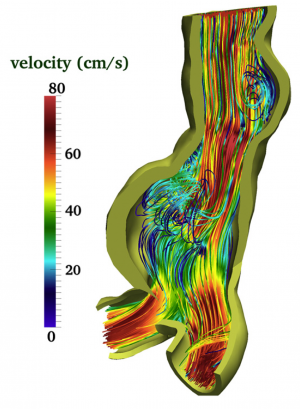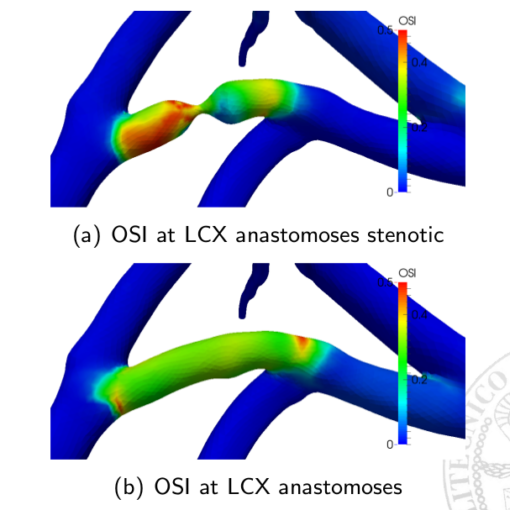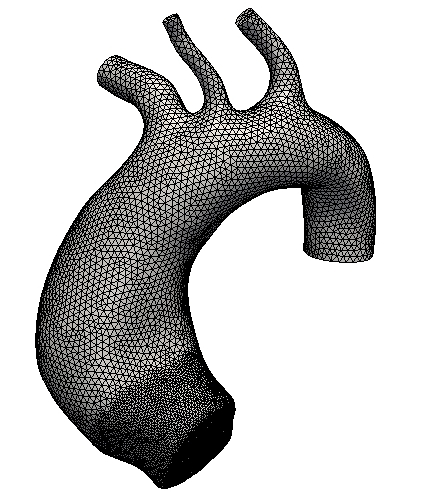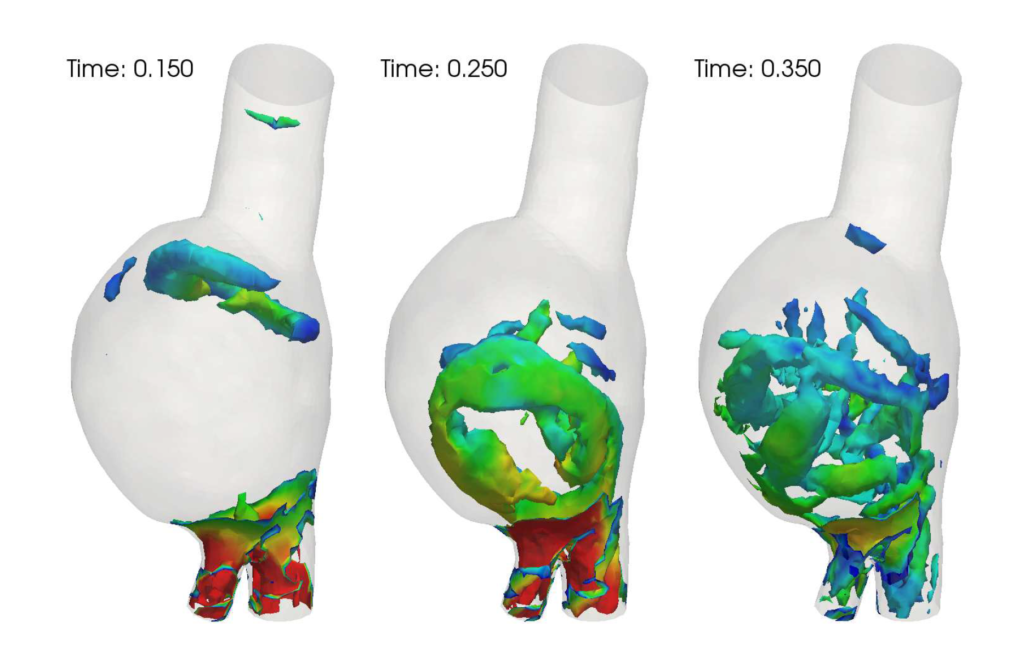
The abdominal aorta is one of the preferential site of aneurysm formation. Abdominal aortic aneurysms (AAA) represent 83 % of all non-cerebral aneurysms diagnosed in the United States. Untreated AAAs may rupture a severe clinical event associated with high rate of mortality and morbidity.
The research at MOX focused on the fluid-dynamics in AAA. In particular, the study of the correlation between lumen displacement (from 4D-CT images) and haemodynamic forces (wall shear stresses) has been provided, supporting the thesis that the wall aneurisms displacements are anisotropic and influenced by the fluid jet.
To better understand the importance of the fluid-dynamics in AAA mechanisms, a comparison between structural simulations with homogeneous inner pressure and complete fluid-structure interaction simulations has been performed.
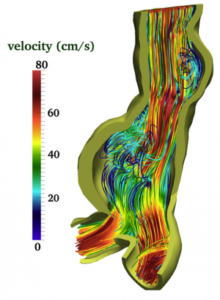
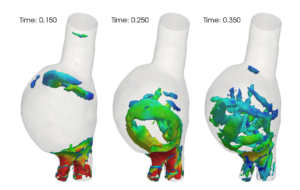
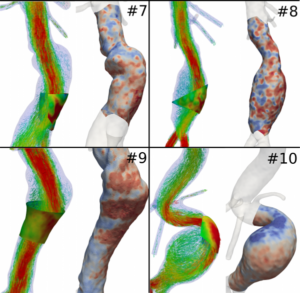
Publications:
- M. Piccinelli, C. Vergara, L. Antiga, L. Forzenigo, P. Biondetti, M. Domanin, Impact of hemodynamics on lumen boundary displacements in abdominal aortic aneurysms by means of dynamic computed tomography and computational fluid dynamics. Biomechanics and Modeling in Mechanobiology, 12(6), pp. 1263-1276, 2013
- Vergara C., Le Van D., Quadrio M., Formaggia L., Domanin M., Large Eddy Simulations of blood dynamics in abdominal aortic aneurysms. MOX Report n. 54/2016
Thesis
- D. Le Van – Fluid Dynamics in an Abdominal Aortic Aneurysm with Large Eddy Simulation and Backflow Stabilization, MSc in Aerospace Engineering, Politecnico di Milano, Academic year ’15-’16. Advisors: L. Formaggia and C. Vergara

